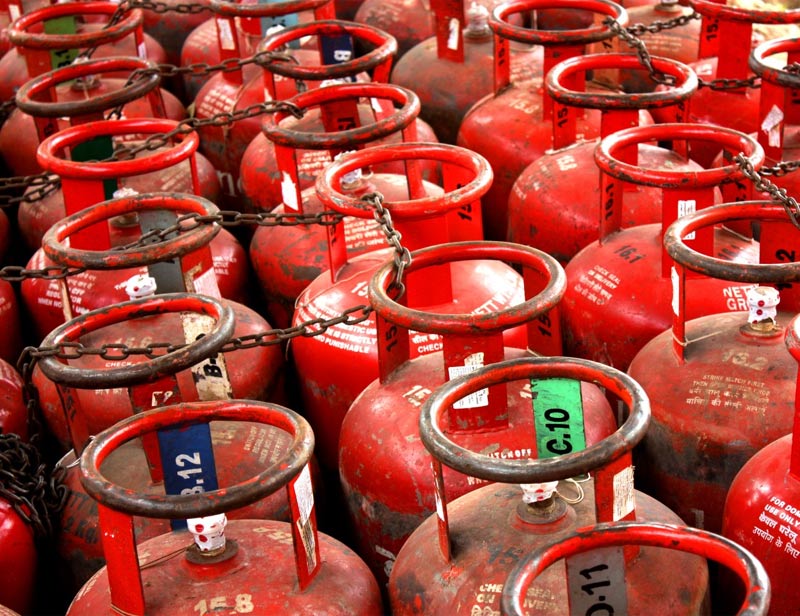Liquefied petroleum gas (LPG)
Liquefied petroleum gas (LPG) is a mixture of gaseous hydrocarbons which has a wide variety of applications. It is produced as an associated gas from natural gas streams and oil extraction as well as from oil refining, and can either be captured or destroyed through flaring or venting.
LPG can be a convenient and clean alternative to natural gas, electric heating or kerosene. It is often used to provide energy to areas without direct access to piped natural gas, to provide off-the-grid refrigeration, and as a power source for combined heat and power (CHP) technologies.
First produced in 1910, LPG now supplies approximately 3% of total energy demand. It is clean in that it burns with no soot and few sulphur emissions, and while it can contribute to air pollution, it does not pose ground or water pollution hazards.
Propane and butane are the two forms in which LPG exists, with their property differences making them suited to particular uses. Propane has a lower boiling point and is better suited to outdoor storage, central heating and other commercial applications. Butane is better suited to indoor applications, such as for powering portable heaters.
The boiling point of LPG is below room temperature, meaning that at normal temperatures and pressures it will evaporate quickly. Therefore, LPG is often stored and supplied in pressurised steel containers such as tanks, cylinders and disposable canisters. These are usually filled to 80-85% capacity to allow for thermal expansion of the LPG in liquefied form.
LPG is widely used in construction, such as for bitumen boilers, heating site accommodation, drying out structural elements, curing concrete, and so on. On construction sites, LPG is usually found in cylinders rather than bulk storage vessels, which are often used when LPG is supplying central heating and/or larger commercial applications.
LPG can burn or explode when in combination with oxygen if there is an ignition source. Containers of LPG may explode if exposed to fire. Other hazards include causing cold burns to skin when in liquid form, as well as non-toxic leakage of LPG displacing oxygen and potentially causing asphyxiation.
Under the Health and Safety at Work, etc. Act 1974, and subsequent legislation, site managers have a responsibility to protect against risks where LPG is being used. Appropriate risk assessments should be carried out under the Control of Substances Hazardous to Health Regulations 2002, particularly when LPG cylinders will be moved using manual handling.
In terms of construction site storage of LPG cylinders, they should:
- Be bept away from combustible material.
- Be kept away from potential ignition sources.
- Be kept away from occupied buildings.
- Not exposed to excessive heat.
- Be stored at least 3 m from cylinders containing oxygen, chlorine, ammonia, etc.
- Be kept in a vertical position.
- Be stored with appropriate fire extinguishers.
- Have prominent displays indicating high flammability, no smoking or naked flames, and so on.
- Be stored securely.
Appropriate evacuation and other safety procedures should be in place in case of fire or leaks. Site staff should be given appropriate information and training regarding LPG.
When being used for the heating of site facilities, the cylinders should be located outside the building, with fixed pipework taking the gas supply inside. Heaters should also have proper, and regularly checked, ventilation. Gas Safe-registered installers should be used to install fixed appliances.
[edit] Related articles on Designing Buildings Wiki
Featured articles and news
Gregor Harvie argues that AI is state-sanctioned theft of IP.
Many resources for visitors aswell as new features for members.
Using technology to empower communities
The Community data platform; capturing the DNA of a place and fostering participation, for better design.
Heat pump and wind turbine sound calculations for PDRs
MCS publish updated sound calculation standards for permitted development installations.
Homes England creates largest housing-led site in the North
Successful, 34 hectare land acquisition with the residential allocation now completed.
Scottish apprenticeship training proposals
General support although better accountability and transparency is sought.
The history of building regulations
A story of belated action in response to crisis.
Moisture, fire safety and emerging trends in living walls
How wet is your wall?
Current policy explained and newly published consultation by the UK and Welsh Governments.
British architecture 1919–39. Book review.
Conservation of listed prefabs in Moseley.
Energy industry calls for urgent reform.
Heritage staff wellbeing at work survey.
A five minute introduction.
50th Golden anniversary ECA Edmundson apprentice award
Showcasing the very best electrotechnical and engineering services for half a century.
Welsh government consults on HRBs and reg changes
Seeking feedback on a new regulatory regime and a broad range of issues.
CIOB Client Guide (2nd edition) March 2025
Free download covering statutory dutyholder roles under the Building Safety Act and much more.
























